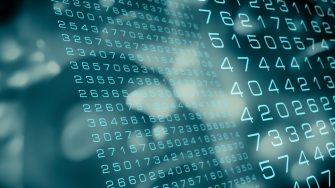To navigate the modern world, we need to redefine what it means to witness
A UNSW expert says a radical rethink of who and what can be a witness can help us better understand contemporary crises.
A UNSW expert says a radical rethink of who and what can be a witness can help us better understand contemporary crises.

When you think of what it means to witness an event, you likely think of a person giving an account of their experience and of what they’ve seen and heard. But is it possible that a nonhuman entity could be thought of as a witness?
Associate Professor Michael Richardson is an expert in media and technology from the School of the Arts & Media at UNSW Arts, Design & Architecture. He says we need to reimagine what can and should be considered a witness.
“If we hope to construct frameworks for justice, not necessarily in a legal sense, but in our political systems and ethics, we need to reconsider different ideas of witnessing,” A/Prof. Richardson says. “That means moving beyond the traditional notion that only human-based forms can bear witness and give testimony to an event.”
In his new book, Nonhuman Witnessing, A/Prof. Richardson examines what it means to bear witness in the modern world. In an era of escalating geopolitical tensions and instability, impending climate disaster, and technological transformation with artificial intelligence, the book makes a case for expanding our conception of what forms witnessing can take.
“We need to shift the tendency to locate authority in the human witness – and in human witnessing – at the expense of other forms of knowing,” A/Prof. Richardson says. “By expanding the concept of witnessing to include nonhuman dimensions, like ecological, machinic, and algorithmic forms, we can better address the complex and interconnected challenges we face.”
A/Prof. Richardson says our current understanding of witnessing is largely human-centric and overlooks the value of nonhuman experiences.
“Our conventional understanding of witnessing is heavily anthropocentric, privileging human perspectives and experiences,” A/Prof. Richardson says. “It’s a narrow focus that excludes other valuable forms of knowledge, and as a result, critical dimensions of witnessing, like responsibility, truth, and significance, are constrained.”
A/Prof. Richardson says the idea of nonhuman witnessing fosters a broader ethical and political relationship with diverse forms of knowledge. This shift challenges the narrow view of human-centric knowledge and encourages acceptance of other forms of knowing.
“If we were to evolve our understanding of witnessing, it compels us to reconsider how we construct knowledge and make ethical and political claims, addressing past injustices and current transformations,” A/Prof. Richardson says. “I think it would prompt humankind to adopt a less selfish perspective, recognising the myriad forms of life and existence that deserve acknowledgment and respect.”
A/Prof. Richardson says doing so would also help highlight the diversity within humanity and the historical injustices related to who has been allowed to bear witness.
“By reimagining witnessing as a dynamic and evolving concept, we confront the limitations of traditional systems of knowledge production and power dynamics that have marginalised certain voices throughout history,” A/Prof. Richardson says. “It encourages a more equitable approach to engaging with the world and each other.”
Incorporating nonhuman witnessing aspects would move us towards a more pluralistic and inclusive understanding of knowledge and communication.
Expanding the idea of witnessing isn’t necessarily done with the end goal of reforming legal proceedings in mind. Instead, A/Prof. Richardson says it could lead to increased attention to subtle forms of violence and alternative ways of knowing, enriching discourse and understanding.
“Incorporating nonhuman witnessing aspects would move us towards a more pluralistic and inclusive understanding of knowledge and communication,” A/Prof. Richardson says. “By including nonhuman perspectives, we can cultivate a deeper appreciation for the multiplicity of worlds and ways of experiencing reality.”
A/Prof. Richardson says there is an urgency to consider nonhuman witnessing, which has arisen from the rise of artificial intelligence (AI) and machine learning in particular. Despite promises of transformative benefits, these technologies pose profound questions about the very foundations of knowledge and how we understand the world.
“With advancements in AI and technology shaping knowledge production, our existing systems often overlook their limitations and biases and simply emphasise its transformative potential,” A/Prof. Richardson says. “This is why incorporating nonhuman witnessing is crucial in understanding the complete context within which these transformations are taking place.”
Expanding witnessing to include the nonhuman dimension is essential for comprehending multifaceted issues driven by human actions. Large-scale AI, for example, including systems used in warfare, often simplifies and mediates complex data from the real world and struggles to capture the full extent of ecological and nonhuman impacts.
“What’s so problematic about large-scale AI and computation is that it needs everything to become computable and subject to the kind of knowledge that computers and algorithms can deal with,” A/Prof. Richardson says. “But the world is far more richly textured than that, so it overlooks the interconnectedness and impact of nonhuman elements, such as ecological systems and animals.”
In the context of warfare for example, A/Prof. Richardson says expanding witnessing would involve acknowledging the impact on the environment and nonhuman entities in conflicts.
“Focusing solely on human suffering in wars is completely understandable, but perhaps there’s also a place for considering the damage to land and communities,” A/Prof. Richardson says. “Incorporating nonhuman witnessing of the land, for example, albeit in non-verbal ways, thus reveals deeper layers of violence and trauma, leading to a more comprehensive understanding of conflicts.”
A/Prof. Richardson says that recognising nonhuman witnessing doesn’t mean disregarding human witnesses or prioritising one over the other. Instead, we should embrace what both human and nonhuman witnesses offer.
“I don’t think we need to choose to value human or nonhuman witnesses over each other now or in the future,” A/Prof. Richardson says. “Instead, we use a pluralistic view of knowledge to better inform critical decisions about the world(s) we exist within.
“That’s part of how we have a viable, flourishing future on this planet.”